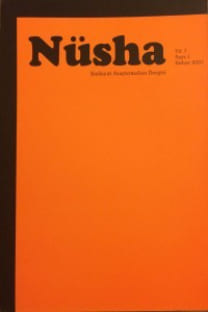Müzik ve Ritmin Birlikteliği: Muhammed el-Kaysî'nin Şiirlerine Eleştirel Bir Bakış
Müzik ve ritmin birlikteliğine yapılacak çalışmanın merkezini şiirsel bir çalışma oluşturacaktır. Arap kasidelerinin telifinde müziğin yapısal bir özellik olarak bulunması kaçınılmaz olduğundan şiirin omurgasını oluşturacak ritim ile müzik arasında sağlam ve daimi bir ilişki bulunmaktadır. Şiirin en önemli iki özelliğini oluşturan ve pek çok ortak noktaları bulunan müzik ve ritmin birbirlerinden ayrı tutulması mümkün değildir. Şiirin konusu ve kasidenin yapısı arasındaki bu ilişki kasidenin bütününde bariz bir şekilde ortaya çıkmaktadır. Şair Muhammed el-Kaysî, "Munemnemât Elîsâ" adlı divanında bu bağlamdan yola çıkmakta ve şiire has ritimsel özelliklerin ufuklarına açılmaktadır. Buradan hareketle şair, ritim konusunu şiir vezinleriyle ele almış ve sahip olduğu engin müzik bilgisiyle divanını zenginleştirmiştir.
The Interrelation of Music and Rhythm: A Critical Approach to Mohammed Alqaisi's Poems
The search in the interrelation of music and rhythm is a distinguishing search at the essence of poetical work. If the Arabic poem is originally lyrical as it entails formative elements which makes the lyrics prerequisite to its musicality, then the relationship with rhythm, which is the backbone of the poetry of this poem, is a close and continuous and authentic relationship. The relation between Musicality by which the Arabic poem is characterized with and is named after and rhythm which the most outstanding mark of this poetics is inseparable because the number of shared attributes between poetically and rhythm. These attributes present the relation between the poetical subject and poetical system of the poem on top of which is the rhythm. The poet, Mohammed Alqaisi, in his anthology named Alisa Miniatures, has followed this methodology and strove to extract the original musical fountains in his poetical production that is receptive to its rhythmical prospects accompanied by the semantically poetical production. He implements the issue of rhythm in its context confidently based on the poetical meters, or what the poetical meter reflects and its zahafat (rhythmic changes) and its causes which enrich the poetical meter and improve its effective music.
___
- ISSN: 1303-0752
- Yayın Aralığı: Yılda 2 Sayı
- Başlangıç: 2001
- Yayıncı: Oku A.Ş.
Sayıdaki Diğer Makaleler
Müzik ve Ritmin Birlikteliği: Muhammed el-Kaysî'nin Şiirlerine Eleştirel Bir Bakış
Aesthetics Title in The Poetry of Ali Jafar Al-Alaq
KUZEY AFRİKA'DAKİ AMÂZÎG (BERBERî) KÜLTÜREL HAREKETİNE SOSYO-TARİHSEL BİR BAKIŞ
MALTACADA ARAPÇANIN ÜRETKENLİĞİ
EBU'L-KÂSIM-İ LÂHÛTÎ'NİN GÖZÜYLE MAKSİM GORKİ
SENGLÂH'IN YENİ NEŞRİ İLE KLÂSİK FARS VE TÜRK ŞİİRLERİ AÇISINDAN ÖNEMİ
Descriptive Analysis of Speaking Activity
